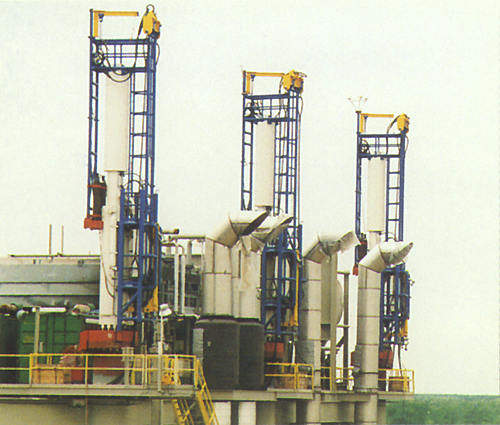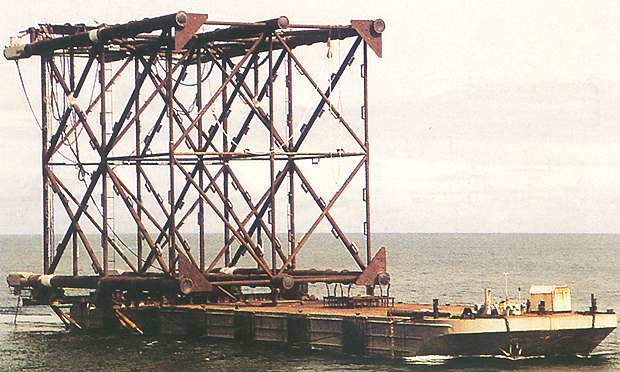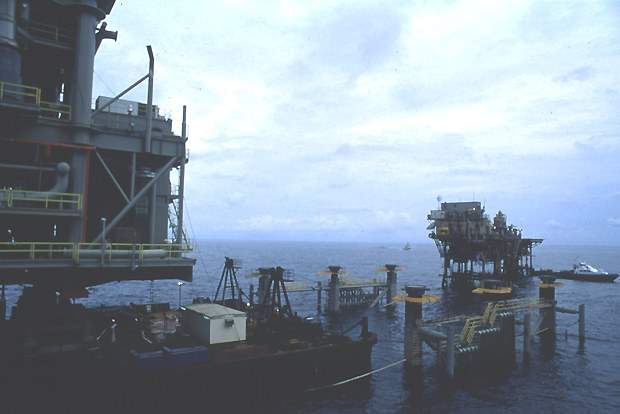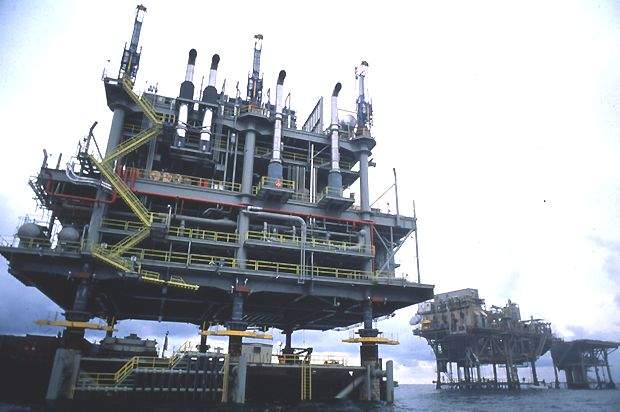The Ekpe gas compression platform is located in a water depth of 50m.
Phase II of the Ekpe field development project consists of a new gas compression platform (OY) and a new living quarters platform (OQ). These are bridge-linked to each another, and to the already existing wellhead and production platforms. The project was won by a joint venture of McDermott-ETPM, as an Engineering Procurement Construction and Installation (EPCI) contract.
Design
To minimise cost, an integrated deck concept was used instead of small, multiple lifts that would require a lengthy hook-up. These decks, however, are relatively heavy and require the use of large crane vessels if a conventional lift technique is selected for the installation process.
Both the 1,456t OY jacket and the 528t jacket for the OQ platform, as well as the piles, were built in McDermott-ETPM West Inc (MEWI)’s yard, in Warri (Nigeria).
The fabrication work for the 4,100t OY compression deck, the 906t living quarters deck, as well as the two bridges weighing 201t each, was carried out in Morgan City by J Ray McDermott.
Ekpe was installed using Smart-Leg technology, based on using vertical, passive hydraulic jack assemblies fitted onto the deck, immediately above the jacket legs. The cargo barge carrying the deck was positioned inside the jacket. The jacks were then activated, establishing contact with the jacket top of piles.
A non-return check-valve was located between each jack and accumulator. This made the jack extend or lock into place if the barge was made to fall in the swell motion. The action of activating the valves during the rising segment of the deck legs motions therefore smoothly locks the deck at the peak of its motion, when the velocity of the deck legs and the kinetic energy forces are zero.
The next phase consisted of completing the load transfer to the jacket, by separating the cargo barge from the deck. This was carried out by ballasting the cargo barge and further jacking up the deck to the point where the Smart Shoes (collapsible support devices) could be actuated.
The Smart Shoes are two A-frames, with sliding bearing pads adapted to fit onto skid rails. Four 1,700t-capacity units were used to support the Ekpe deck.
Once the deck was locked at the highest swell position and the barge was ballasted, special explosive split nuts in the Smart Shoes were actuated to collapse the Shoes. This near-instantaneous collapse allowed for the final 50% load transfer, leaving a 2.7m clear gap above, sufficient for the cargo barge to move out.
Jacket design
Jackets built conventionally do not allow for the slot necessary for a cargo barge to enter the jacket legs. Minor adjustments were made to the design of the Ekpe 1,300t compression jacket in order to allow for the 90m long and 30m wide cargo-barge to position itself between the six jacket legs. In addition, the legs were made vertical, the steel thickness was increased a little and the annulus between piles and jacket legs were fully grouted. The jacket side-load capability had to allow for the cargo barge mooring forces.
Installation
The deck was loaded out on the cargo barge and then the deck/barge combination itself was loaded onto a fast vessel, for transportation to the site located offshore Nigeria. Once on-site, the barge/deck combination was refloated off the fast vessel.
The acceptable limit in terms of waves was no more than 2.8m (1.5m Hs) in the long period (up to 15 seconds). Long period swells are typical of the Gulf of Guinea.
The six hours required for the float-over included a lengthy verification period, however, the overall length of a future float-over operation could be completed in two to three hours.














